Cyberpunk, as an actual, named genre, has been around for almost four decades. Although it has changed and evolved over the years, cyberpunk is very much alive and thriving. [If you don’t believe me, that’s (a) a different piece and (b) look out your window.] Reports of its death have been greatly exaggerated.
That said, if you ask people about the authors and creators they associate with cyberpunk, you’ll still hear many of the same names bandied about now that you would’ve heard ten, twenty, or even forty years ago. William Gibson, Bruce Sterling, Neal Stephenson… These are, inarguably, terrific writers, all of whom are still publishing new and brilliant works today. However, after the twentieth identical recommendation list, one could be blamed for thinking that these sacred names are all of cyberpunk.
Worse yet, this repetition misrepresents cyberpunk on many levels. The recurring bogeyman of the ‘all male recs list’ overlooks the incredible work of some of the movement’s most important early contributors. There’s the indomitable Pat Cadigan, essayists like Donna Haraway, television creators like Max Headroom’s A.J. Jenkel, and, of course, the editor who built the genre in the pages of Omni, Ellen Datlow. By the 1990s, the movement was being propelled by authors such as Wilhemina Baird, Lisa Mason, Melissa Scott, Misha, and Eileen Gunn. The myopic focus on the same few names also ignores cyberpunk’s meteoric global spread, and its intersection with Afrofuturism. Cyberpunk was, from its start, a subgenre about revolution, responding to unequal systems, assumptions of privilege, and unfair access to power. Cyberpunk interrogated assumptions about the future—and a result, it resonated with marginalised or excluded people around the world.
Cyberpunk is also a naturally dynamic genre. It responds to popular culture, local contexts, politics and social trends. Cyberpunk is in constant dialogue with itself—challenging its forebears, and pushing itself to further extremes. It is a genre borne just as much out of postmodernism as science fiction, and with that comes an intrinsic detest of the static and unchanging. Gibson’s Neuromancer is fast approaching its 40th anniversary. It is a truly phenomenal work, and a legitimate classic of literature, but presenting cyberpunk as a genre that hasn’t evolved since 1984 is wilful nostalgia. Contemporary cyberpunk is more defined by the Wachowski’s Matrix franchise, or Janelle Monáe’s Dirty Computer.
I’ve plucked a few overlooked books from cyberpunk’s forty-year history. These also deserve celebration, as they’re brilliant, entertaining reads – but also they also show how cyberpunk has continued to balance its core themes of interrogation and discontent with new voices, techniques, and contexts.
Red Spider, White Web by Misha (1990, Morrigan and Wordcraft of Morrigan)
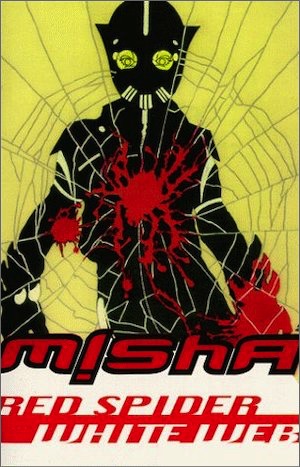
It is hard to say something is overlooked when it has been reviewed on this very site, but said review is almost ten years old (it is also very good). Misha’s short cyberpunk work is brilliant; dynamic, fluid stories that freely wander between poetry and prose. Red Spider, White Web is hard-hitting, even for the genre; a world of flickering lights and acid rain. The characters, almost all types of artist, are trying to escape the miserable daily struggle through their art, but are often forced to sacrifice even that in order to survive the challenges of a crushing ultra-capitalist system. Red Spider, White Web plays with language not only to reinforce its themes of alienation, but to push the conventions of gender and intersectionality. It is relentless and powerful, and deserves to be mentioned alongside the other true classics of the genre.
Busted Synapses by Erica Satifka (2020, Broken Eye)
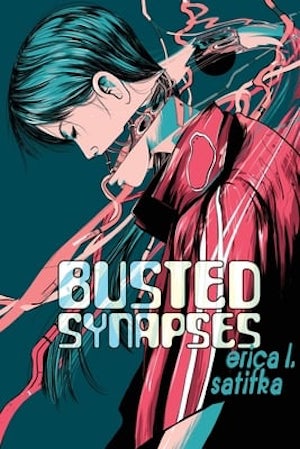
Satifka’s fiction is the answer to the question ‘what if you gave cyberpunk a hard reboot in 2020?’. She is, to me, the undisputed best at cyberpunk world-building, creating tangible near-futures that are saturated with plausible, considered extensions of everyday technology. Best of all: that world-building is entirely secondary to the plot and characters. Satifka populates her stories with richly-developed, empathetic people facing fascinating conflicts. Although How to Get to Apocalypse (2021) is my personal Satifka-of-choice, for those that like longer fiction, Busted Synapses is an incredible novel of a small town in the throes of late-stage capitalism, with young protagonists devoid of futures, hope, or even a semblance of opportunity. At least, until now – when an enigmatic newcomer arrives, bringing with her a glimpse of, if not hope, the potential for change. A novella that hints at a more epic plotline, Busted Synapses is more about the day-to-day experience of its characters, residing in a near future that’s close enough to touch.
Machine Sex and Other Stories by Candas Jane Dorsey (1988, Tesseract and the Women’s Press)
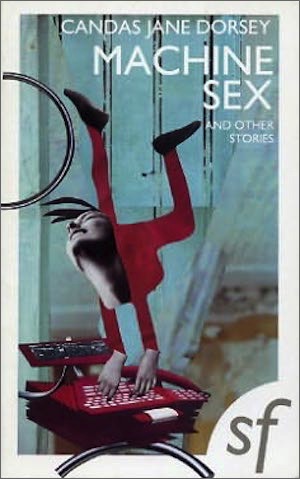
The titular story, “(Learning About) Machine Sex” is a perfect example of how the second wave of the cyberpunk movement quickly moved to challenge its own immediate predecessors. First published in 1988, it explicitly, painfully, described the patriarchy underpinning the technology industry – and, by using that as metaphor – showed how that self-same system existed in art and literature. A cutting and powerful story, it is easily read as a response to the initial wave of the cyberpunk movement. The rest of the collection is equally blazing – in all senses of the word. Dorsey examines – and experiments with – a wide range of science fictional tropes, ranging from first contact to time travel, demonstrating not only a fluency with the many different conventions of the science fiction genre, but the rare ability to innovate within each one. The stories are occasionally subversive, invariably human-centric, and all excellent.
The Goldblum Variations by Helen McClory (2014, 404 Ink)
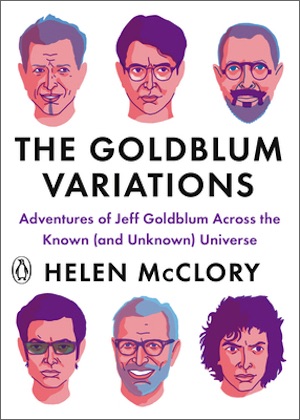
Cyberpunk takes popular culture seriously. As a genre, it appreciates that culture has as much impact on the lived experience of human beings as technology does, and therefore deserves the same level of imaginative exploration. Some of my favourite cyberpunk works contemplate the significance of video games, football, or dance music with the rigour and seriousness that Golden Age authors used to describe fusion drives. Music, is, of course, everywhere in the genre (the clue is in the name). But there’s also great cyberpunk about television, fashion, games, and movies. McClory’s collection of stories about Jeff Goldblum (yes, that Jeff Goldblum, the one you’re thinking of) is about the very nature of celebrity. It is an inherently self-reflexive text, constantly asking the question, ‘would this matter if it weren’t Jeff Goldblum?’ (or, as it goes, one of many different versions of Jeff Goldblum). The stories range from the whimsical to the spooky; some focusing on personal tragedy, others on cosmic exploration. The entire experimental package is delightful: cyberpunk both as exploration of culture and experiment with form.
Sad Sack by Sophia Al-Maria (2019, Bookworks)
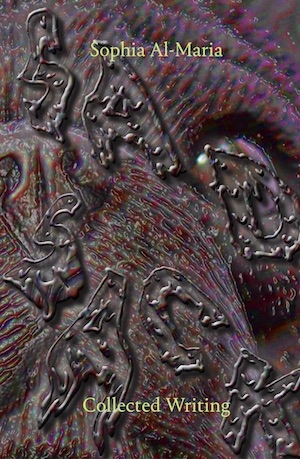
Sophia Al-Maria’s collection—spanning essays, memoir and other writings—is in many ways, ‘classic’ cyberpunk, easily sitting alongside the anarchic manifestos and experimental works of the mid-1980s. The similarities are more than stylistic. Sad Sack is in direct conversation with a classic, science-fictional predecessor—in this case, Ursula K. Le Guin’s “The Carrier Bag Theory of Fiction”. It also draws from the genre’s postmodernist roots, with its experiments in form and mode: Sad Sack is an attempt to compress an author’s unfinished existential journey into a static text, and simmers with rebellion against the indignity thereof. Al-Maria, in the best tradition of the movement, freely crosses boundaries in her work as writer, film-maker, and interdisciplinary artist. She’s also notable for both introducing and, later, re-examining the notion of ‘Gulf Futurism’: the aesthetic and cultural trend she spotted while growing up in the Persian Gulf. Al-Maria witnessed the dangers of rampant consumerism, wrapped in a dangerously blinkered techno-utopian worldview—hemes very much familiar to cyberpunk. But, again, refusing to stay static, Al-Maria widens her challenge to include herself, her own perceptions, and constructed narratives of all forms.
***
For this list, I’ve stuck solely to written works and small press publications. I’ve tried to be accurate in citing the initial publisher, as well as the most available edition. Small presses have always been a natural home for cyberpunk’s, well, punk, nature. As a mode of writing that is deliberately challenging, the larger, more commercially-driven imprints are going to be understandably wary. Small presses are far more willing to shoulder the risk, and, as a result, cyberpunk writing thrives in fringe publications and strange, esoteric, formats. Although there’s still no excuse to only recommend the same names over and over again, cyberpunk’s reliance on atypical publishing can often make it hard for people to see exactly how it has developed.
In collecting The Big Book of Cyberpunk, my objective was to show how the genre has survived, and thrived, from its earliest moments through to the present day. This goal meant that the most familiar names are, rightfully, present, but that I had a responsibility to showcase the overlooked as well. The hundred-odd stories in this collection span over half a century, two dozen countries, and publications that range from literary anthologies to Twitter (RIP) threads. Long-standing readers of cyberpunk deserve to see its richness represented, and those coming new to it have the opportunity to see the full range of the genre.
Jared Shurin is the editor of The Big Book of Cyberpunk, The Djinn Falls in Love, The Outcast Hours, The Best of British Fantasy series, and many others. He writes irregularly at Raptor Velocity.










